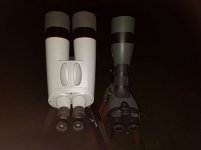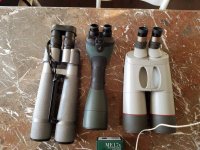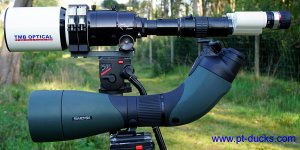Ok, Henry, That's what I thought.
I've had exactly the same thing as you. If unused eye sees too much light or too distinct a pattern, it becomes a burden for my brain to filter that image out. If the eye sees an out-of-focus blob of black or grey, the image from the dominant, viewing eye completely dominates visual processing and viewing is easy and fatigue-free.
For me, this has been a very important improvement of viewing comfort and viewing endurance. Like the aiming device, the self-made "ambidextrous blinder" has become an essential part of my birding gear.
Kimmo
I've had exactly the same thing as you. If unused eye sees too much light or too distinct a pattern, it becomes a burden for my brain to filter that image out. If the eye sees an out-of-focus blob of black or grey, the image from the dominant, viewing eye completely dominates visual processing and viewing is easy and fatigue-free.
For me, this has been a very important improvement of viewing comfort and viewing endurance. Like the aiming device, the self-made "ambidextrous blinder" has become an essential part of my birding gear.
Kimmo






